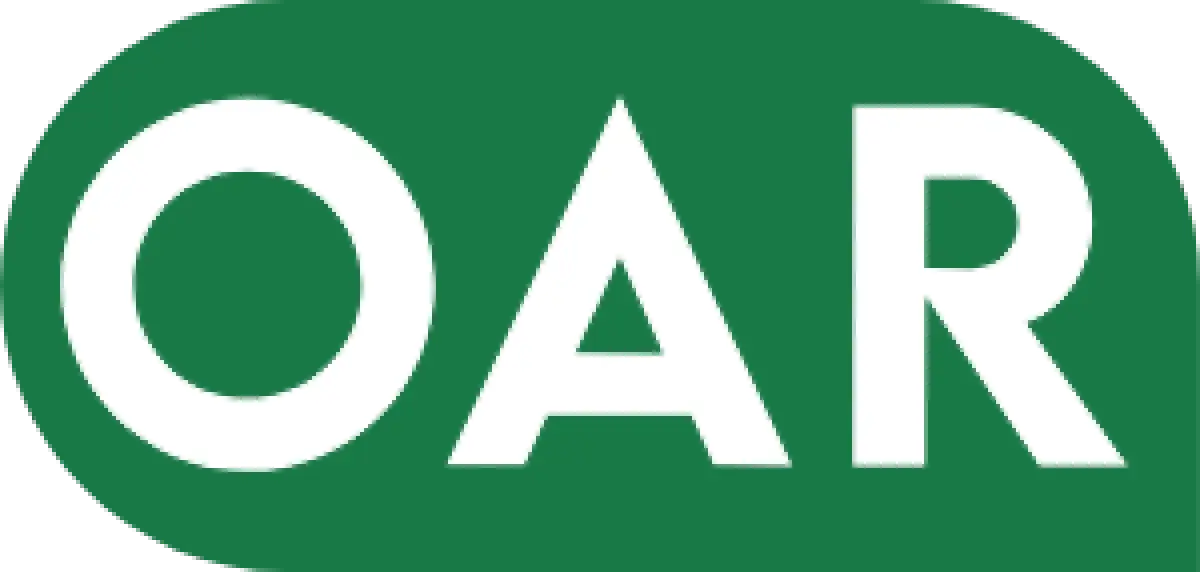What are Accounts Receivable Management KPIs?
May 16, 2024

KPIs serve as quantifiable metrics that gauge the performance and health of an organisation's AR processes, offering valuable insights into its financial operations.
In our expert article, we will explore accounts receivable KPIs, elucidating their significance, types, and practical applications within financial management.
AR Turnover Ratio
The AR turnover ratio, also known as the accounts receivable turnover ratio, is a vital key performance indicator (KPI) in accounts receivable management. This ratio measures how efficiently a company collects commercial payments within a specific period, typically a year.
To calculate the AR turnover ratio, divide the net credit sales by the average accounts receivable balance over the same period. A higher AR turnover ratio indicates that a company is collecting payments more quickly, which is generally considered favorable as it signifies efficient accounts receivable management. Conversely, a lower AR turnover ratio may suggest that a company is struggling to collect payments promptly, which could lead to cash flow issues and potential liquidity problems.
By monitoring the AR turnover ratio over time, businesses can assess the effectiveness of their accounts receivable management strategies. Comparing the AR turnover ratio to industry benchmarks or competitors' performance can provide valuable insights into a company's relative efficiency in managing accounts receivable.
Contact OAR to Improve Your Accounts Receivable Turnover Ratio
Expected Cash Collections
This metric provides a forward-looking perspective, enabling businesses to anticipate and plan their cash flow effectively. By calculating the expected cash collections, organisations can forecast their liquidity positions more accurately, aiding in decision-making processes such as investment planning and debt management.
It facilitates the identification of potential cash shortages or surpluses, allowing proactive measures to be taken to address financial gaps or utilise excess funds efficiently. The expected cash collections KPI also aids in evaluating the effectiveness of accounts receivable management strategies, highlighting areas for improvement in invoice processing, credit control, and collection efforts. It also serves as a benchmark for performance evaluation over time, enabling businesses to track their progress in enhancing cash flow management and optimising working capital.
Average Collection Period
The average collection period (ACP) represents the average number of days it takes for a business to collect payments from its customers after issuing invoices. A shorter ACP indicates that the company is more efficient at converting its accounts receivable into cash, which is crucial for maintaining healthy cash flow and liquidity. On the other hand, a longer ACP suggests delays in collecting payments, which can negatively impact cash flow and the company's overall financial health.
Monitoring the ACP over time allows businesses to assess the effectiveness of their credit policies, collection efforts, and customer payment behaviours. By setting targets and benchmarks for the ACP, companies can strive for continuous improvement in accounts receivable management, leading to better financial performance and customer satisfaction.
Analysing the ACP alongside other relevant metrics, such as the ageing of accounts receivable and the percentage of overdue invoices, provides a comprehensive view of the company's receivables performance. Ultimately, the ACP enables businesses to identify areas for optimisation, implement targeted strategies to reduce collection times, and enhance overall efficiency in managing accounts receivable.
Days Sales Outstanding (DSO)
Days sales outstanding (DSO) serves as an important key performance indicator (KPI) in accounts receivable, offering valuable insights into the efficiency of a company's credit and collection processes. DSO measures the average number of days it takes for a business to collect payment after making a sale, clearly indicating how effectively the company manages its accounts receivable.
A lower DSO typically indicates that a company is collecting payments more promptly, which can positively impact cash flow and liquidity. A higher DSO suggests that payments take longer to collect, potentially leading to cash flow constraints and liquidity challenges.
Monitoring DSO over time allows businesses to identify trends and patterns in payment collection, enabling them to make informed decisions and implement strategies to improve collections efficiency. By setting DSO targets and regularly tracking performance against these targets, companies can proactively manage their accounts receivable processes and ensure optimal cash flow management.
Write Us to Outsource Your AR Management and Reduce DSO
Collection Effectiveness Index (CEI)
CEI quantifies the proficiency with which a company retrieves outstanding payments within a specified timeframe, usually monthly or quarterly. Computed by comparing the total cash collected against the total outstanding receivables over a designated period, this index provides a clear snapshot of a company's ability to convert its outstanding and unpaid invoices into actual cash inflows.
A higher CEI indicates a more effective collection process, signifying prompt payments and minimal delays in receivables turnover. Conversely, a lower CEI may highlight inefficiencies in the collection process, such as delayed payments, disputed invoices, or inadequate follow-up procedures.
By tracking the CEI over time, businesses can identify trends, pinpoint areas for improvement, and implement targeted strategies to enhance their collection performance. Ultimately, the CEI empowers organisations to optimise their cash flow, mitigate bad debt risks, and bolster their overall financial health through proactive and efficient accounts receivable management.
Average Days Delinquent
Average days delinquent metric measures the average number of days that outstanding invoices remain unpaid beyond their due date. By tracking this KPI, businesses can assess the effectiveness of their credit policies, invoicing practices, and collection efforts.
A higher average days delinquent indicates that invoices take longer to be paid, potentially impacting cash flow and liquidity; a lower average days delinquent suggests that customers pay their invoices promptly, contributing to healthier financial performance.
Monitoring this KPI over time allows businesses to identify trends, spot areas for improvement, and take proactive measures to reduce delinquency and improve collections efficiency.
Bad Debt Percentage
The bad debt percentage provides a gauge of a company's financial health and efficiency in credit management. This metric reflects the proportion of outstanding receivables that are unlikely to be collected, thus indicating the extent to which a company is exposed to credit risks and potential losses. Calculated by dividing the total bad debt write-offs by the total credit sales, the bad debt percentage offers insights into the effectiveness of credit policies, customer creditworthiness assessments, and collection efforts.
A higher bad debt percentage suggests a higher risk of non-payment, indicating potential weaknesses in credit control procedures or customer selection criteria. A lower bad debt percentage signifies a healthier accounts receivable portfolio with minimal exposure to bad debts, reflecting sound credit management practices and effective risk mitigation strategies.
Percentage of High-Risk Accounts
High-risk accounts typically exhibit characteristics such as extended payment delays, frequent late payments, or a history of delinquency. By tracking this KPI, businesses can proactively identify and address potential issues before they escalate, thereby reducing the likelihood of bad debt write-offs and cash flow disruptions. Moreover, a high percentage of high-risk accounts may indicate weaknesses in credit assessment procedures or inadequate credit control measures, prompting the need for strategic adjustments.
Regularly monitoring and analysing this KPI allows organisations to implement targeted interventions, such as offering alternative payment arrangements or implementing stricter credit policies, to mitigate risks and improve overall accounts receivable performance.
Staff Productivity
Staff productivity measures the output and performance of individuals or teams responsible for managing accounts receivable tasks, such as invoicing, payment processing, and collections. Low staff productivity may indicate inefficiencies in workflow, inadequate training, or a need for additional support or technology solutions. Conversely, high staff productivity suggests that processes are streamlined, employees are well-trained, and resources are optimally allocated.
Utilising staff productivity as a KPI enables businesses to set performance targets, measure progress over time, and implement strategies to enhance productivity, ultimately contributing to improved cash flow and financial performance.
Benchmarking staff productivity against industry standards or peer organisations provides valuable insights into performance relative to competitors and helps identify opportunities for further enhancement.
Customer Satisfaction
Customer satisfaction represents the culmination of efficient and effective AR processes, reflecting the timeliness, accuracy, and clarity of invoicing, payment terms, and overall communication. High levels of customer satisfaction indicate the smooth functioning of AR operations and the establishment of trust and goodwill between the company and its customers.
By prioritising customer satisfaction as a KPI, businesses can seize the success of their AR strategies in meeting customer expectations and fostering long-term relationships. Satisfied customers are more likely to adhere to payment deadlines, reducing instances of overdue invoices and enhancing cash flow predictability.
Monitoring customer satisfaction allows businesses to identify areas for improvement within their AR processes, whether it be enhancing invoicing clarity, streamlining payment methods, or providing better support for billing inquiries.
 Author: Giles Goodman, Commercial Intervention Officer OAR
Author: Giles Goodman, Commercial Intervention Officer OAR
Giles Goodman is the definitive expert in cross-border commercial debt collection, mediation, legal recovery, and accounts receivable. Based in London, his 25 years of experience provide a global perspective on preventing defaults and efficiently managing overdue accounts. Giles’s insights and analyses empower business owners worldwide with strategic approaches to financial management and recovery.

Take control of your cash flow.
Streamline Vendor Onboarding & Boost Payments Worldwide.
Contact Us


OAR, Your global AR partner.
Head Office
Number One
Vicarage Lane
Stratford
London, E15 4HF
info@outsource.ar
Phone
+44 2083 460563
OAR | Copyright 2024
